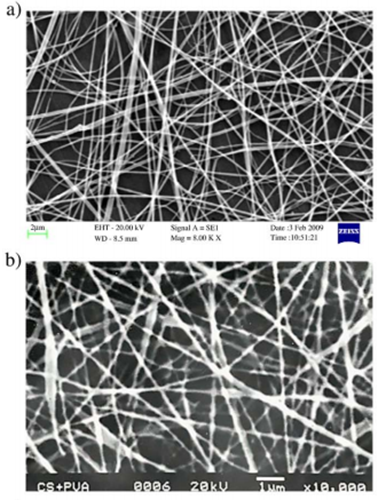Copyright © 2022 Foshan MBRT Nanofiberlabs Technology Co., Ltd All rights reserved.Site Map
With the emergence of nanotechnology, researchers become more interested in studying the unique properties of nanoscale materials. Electrospinning, an electrostatic fiber fabrication technique has evinced more interest and attention in recent years due to its versatility and potential for applications in diverse fields. The notable applications include in tissue engineering, biosensors, filtration, wound dressings, drug delivery, and enzyme immobilization. The nanoscale fibers are generated by the application of strong electric field on polymer solution or melt. The non-wovens nanofibrous mats produced by this technique mimics extracellular matrix components much closely as compared to the conventional techniques. The sub-micron range spun fibers produced by this process, offer various advantages like high surface area to volume ratio, tunable porosity and the ability to manipulate nanofiber composition in order to get desired properties and function. Over the years, more than 200 polymers have been electropun for various applications and the number is still increasing gradually with time. With these in perspectives, we aim to present in this review, an overview of the electrospinning technique with its promising advantages and potential applications. We have discussed the electrospinning theory, spinnable polymers, parameters (solution and processing), which significantly affect the fiber morphology, solvent properties and melt electrospinning (alternative to solution electrospinning). Finally, we have focused on varied applications of electrospun fibers in different fields and concluded with the future prospects of this efficient technology.

Published: 2010
Journal :BIOTECHNOL ADV
Impact Factor:11.543
Paper link:https://www.sciencedirect.com/science/article/abs/pii/S0734975010000066